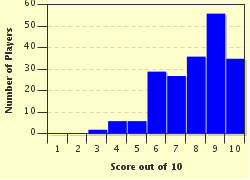Quiz Answer Key and Fun Facts
1. Pluto was once considered to be the ninth planet in our Solar System. In 2006 astronomers discovered objects bigger than Pluto. Because of that discovery, many scientists believed Pluto could no longer be classified as a planet. What is it classified as now?
2. You've probably heard of a solar eclipse. What happens during a lunar eclipse?
3. Earth is one of eight planets located in our Solar System which in turn is located in a galaxy. What do we call our galaxy?
4. Which planet tilts so far to one side that it orbits the sun on its side?
5. What is the closest star to Earth?
6. Aldebaran is a red giant star and the brightest star in which constellation?
7. Which constellation is known as The Hunter?
8. Jupiter is the largest planet and has the most moons. Not all the planets in our solar system have moons. Which two planets don't?
9. In 2005 a meteorite was found near the heat shield of the NASA Exploration Rover Opportunity. This meteorite was informally called "Heat Shield Rock" because it was found near the rover's heat shield. On which planet was it found?
10. What do scientists call planets that orbit stars other than the Sun?
Source: Author
nmerr
This quiz was reviewed by FunTrivia editor
NatalieW before going online.
Any errors found in FunTrivia content are routinely corrected through our feedback system.


